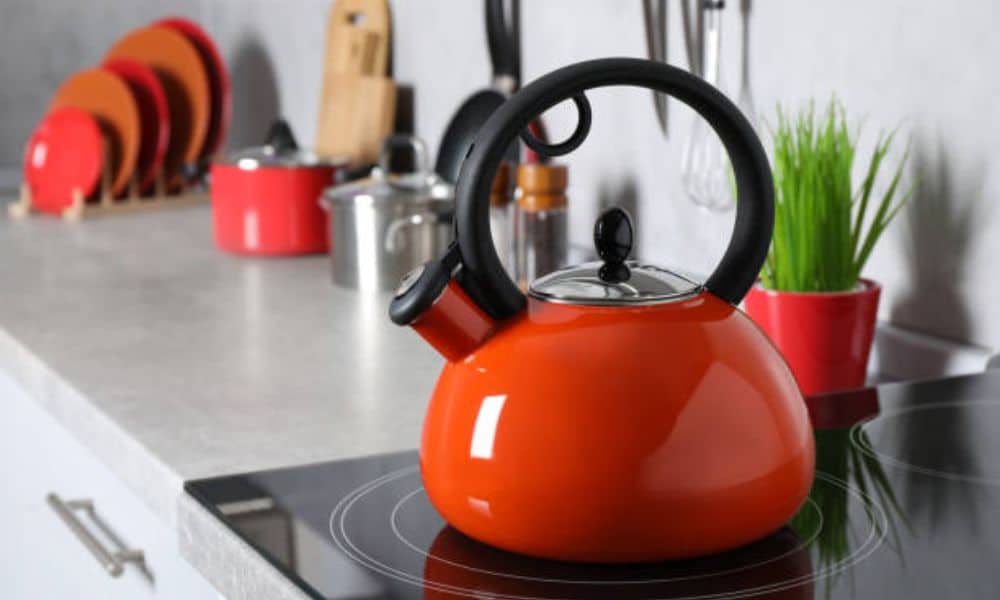I want to share a small secret today. Making tea in a kettle is not just boiling water. It is an art. It is a daily comfort I love. My first home was a tiny cottage. The kitchen was no bigger than a closet. I had no fancy gadgets. But I had an old kettle from my grandmother. That kettle became my treasure. Every day it sang with steam. I learned how to make tea that tasted rich and smooth. Now, I want to share my tips with you. Let’s enjoy this simple joy together.
Why I Still Use a Kettle (and Love Every Minute of It)
Today, many people use electric tools or coffee machines. Some ask why I still choose my kettle. My kettle gives me control. I can see the water start to boil. Hear the soft whistle. I stop it at the best time.
There is joy in lifting a pot from the stove. Pouring hot water over ea feels timeless. This small act slows me down. It helps me enjoy simple moments in my day.
My Step-by-Step Method
Alright, let’s get to it. Making tea in a pot isn’t complicated, but getting it just right does take a bit of care. Here’s how I do it, from start to finish.
01. Choose Your Kettle and Tea
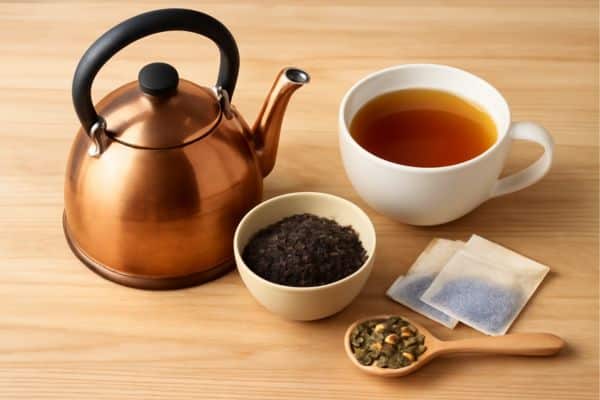
Pick a Good Kettle
You can use a stovetop kettle—whether stainless steel, copper, or enamel—or an electric kettle if you prefer. I love my stovetop pot for the experience, but both work well.
Select Your Tea
Loose-leaf tea always gives you better flavor than tea bags. That said, if bags are what you have, they’ll still make a fine cup. Black, green, herbal blends—whatever suits your mood!
02. Fill the Kettle with Fresh, Cold Water
This might seem obvious, but trust me—it makes a difference. Always use fresh, cold water straight from the tap (or filtered water if your tap water has a strong taste). Why? Because water that’s been sitting in the pot or reboiled loses oxygen, and that affects how well brews.
Tip from my kitchen: Never fill the kettle more than you need. Water that sits too long in the kettle after boiling can pick up a metallic taste.
03. Bring the Water to the Right Temperature
Different teas need different water temperatures. This is where a pot gives you control:
- Black tea / Herbal: Let the water come to a full, rolling boil.
Green tea / White: Heat the water until it’s just before boiling—when you see small bubbles forming at the bottom of the pot. If you go past this point, let the water cool for a minute or two before pouring.
My trick: I listen for the kettle’s sound. A soft rumble means we’re close; a loud, angry boil means we’re ready for black tea!
04. Warm Your Teapot or Cup
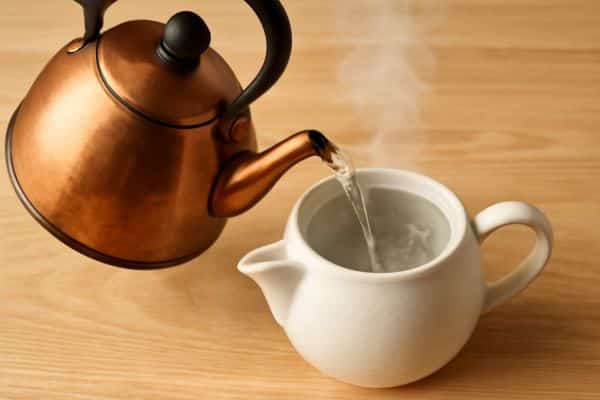
Before you pour the hot water onto, swirl a little boiling water around or cup and then discard it. This step prevents the hot water from cooling too quickly when it meets the cold pot or cup.
Why I never skip this: It keeps the brewing temperature steady, which means extracts properly and tastes smoother.
05. Add Tea and Pour Water
If you’re using loose leaf tea, measure about 1 teaspoon per cup (plus one extra “for the pot” if you’re making a whole pot). Place the leaves in an infuser or directly in the pot if you plan to strain later. For tea bags, use one per cup.
Now, pour the hot water gently over the tea. I like to pour slowly, watching the leaves unfurl. This is the part where the magic happens.
06. Steep for the Right Amount of Time
Here’s where patience pays off:
- Black: 3-5 minutes
- Green: 2-3 minutes
- Herbal: 5-7 minutes
- White: 4-5 minutes
Set a timer if you like (I always do). Too short and will taste weak; too long and it might become bitter or overly strong.
Pro tip: Give the tea a gentle stir halfway through brewing. I find it helps release flavor more evenly.
07. Remove the Leaves or Tea Bag
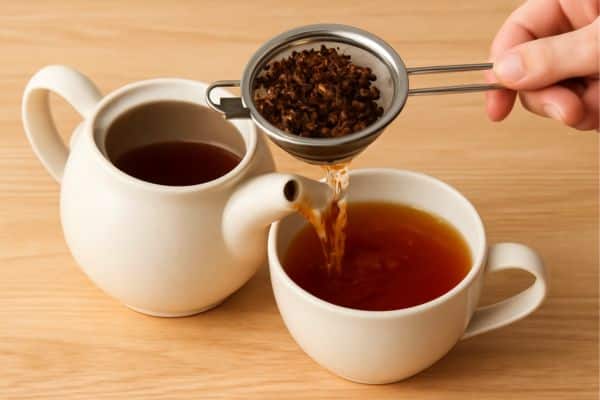
Once your tea’s steeped, remove the leaves or tea bag to stop the brewing. This keeps the flavor balanced and prevents bitterness. If you used loose leaves directly in the pot, pour through a strainer into your cup.
08. Add Your Finishing Touches
This is the fun part! Add milk, sugar, honey, or lemon as you like. I often enjoy my black tea with a splash of milk and a tiny spoon of sugar. For herbal teas, I’ll go with honey. Green teas? I leave them plain to enjoy their delicate taste.
My Tried-and-True Tips for a Perfect Kettle-Brewed Tea
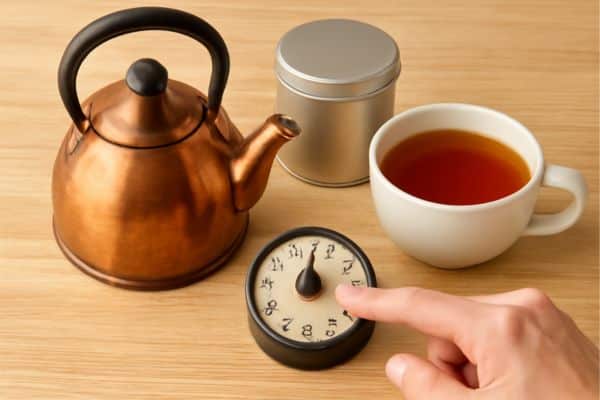
After making thousands of cups of tea (and yes, I mean thousands), I’ve picked up a few small tricks that make a big difference. Let me share them with you.
Always Use Fresh Tea
Old tea loses its aroma and flavor. Store in an airtight container, away from light and moisture. I have a special tin just for my black tea, and I refill it regularly.
Don’t Reboil Water in the Kettle
I know it’s tempting to leave water in the pot and reboil it for your next cup. But trust me, fresh water every time makes taste brighter. Reboiled water can taste flat and dull.
Respect Steeping Time
If I had a dollar for every cup of over-steeped tea I’ve had in my life, well… I’d be rich! Set a timer, or at least keep an eye on the clock. It really makes all the difference between a tea that comforts and that disappoints.
Pre-warm Your Mug
I mentioned warming your pot or cup earlier, but it’s worth repeating. A warm mug keeps hot longer. Plus, there’s something lovely about wrapping your hands around a warm mug on a chilly day.
Make It a Ritual
This might sound funny, but I always hum or put on soft music while making tea. It turns a simple task into a peaceful moment of self-care. Tea is as much about the process as the drink itself.
When Things Go Wrong: Easy Fixes for Tea Troubles
Even tea lovers make mistakes at times. But small changes can fix most problems. Here are some common ones.
Bitter taste
The water was likely too hot. Or you steeped the tea too long. Let the water cool a little for gentle. Watch your steep time for a smoother cup.
Weak taste
You may have used too little tea. Or the steep time was too short. Add more leaves next time. Let the steep a bit longer, but not too long.
Metallic taste
Your kettle may need a clean. Minerals can build up and change the taste. Boil a mix of water and vinegar. Rinse well. Your pot will feel fresh again.
A Final Thought
I lift my kettle and feel calm. Life’s best moments are quiet and simple. A cup of tea made with care warms the hands. It warms the heart too. Tea from a pot feels extra special.
Take your time. Enjoy the soft whistle. Watch the steam rise. Feel the warmth in each sip. Small rituals like this can brighten any day.

